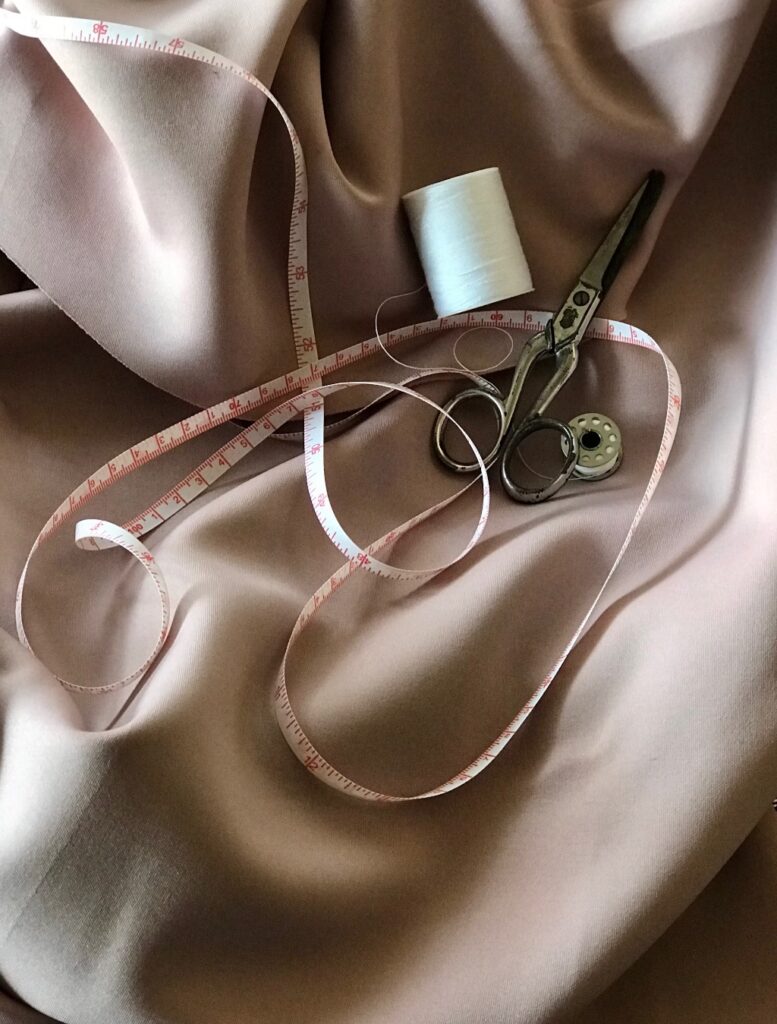
Meadowlark ‘3 Hexagon Stone’ ring, from $3619, ‘Outline Band’ ring, from $6969, ‘Aphrodite’ ring, from $3775, and ‘Dahlia’ ring, from $3919. PHOTOGRAPHY VERONICA CROCKFORD-POUND & JOSEPH GRIFFEN (PICTVRE)
I’ll never forget my first trip to China. It was a pivotal moment in my fashion-industry career. After the bustle of Hong Kong, a colleague and I drove to Guangzhou, a city known globally as a garment-production hub.
The further inland we went, the more monochromatic the landscape became — shades of brown-grey, the air hazy and gritty. The city was a sprawling concrete jungle of industrial buildings, and inside many of them, people were making clothes. The stark contrast with the factories I’d visited in New Zealand was jarring. I realised just how fortunate we are to have clean air, and relatively abundant plant life in our urban and industrial areas.
The fashion industry is thought to be responsible for around four to 10% of global greenhouse gas emissions. It’s a sobering statistic, and this trip made it real for me, although it showed only part of the story. Not everything is manufactured in Guangzhou — every garment, every product has its own backstory, its own supply chain.


Images: Unsplash.
We know that the carbon impact of cultivating cotton is determined by yield and varies from region to region and by season. That’s just growing the fibre. We also know that a spinning mill that uses renewable energy has a smaller footprint than a mill that uses coal power, and the same can be said for a weaving mill, a dye house or a garment factory. We know that shipping clothes by sea has a smaller footprint than transporting them by air. That’s the back end, the area I work with fashion businesses on to make change, switching to better materials and working with their suppliers to implement better practices.
Once a garment is made, its footprint doesn’t stop growing. A study out of Sweden showed that more than 50% of the carbon emissions from a garment’s life occur beyond the point of purchase.
This is great news, because it means it’s in our hands as customers, so while brands sort out the back end, we can all do something at ours. It comes down to being mindful about how we purchase and care for our clothes.
Try to avoid airfreight as much as possible.
Buying locally, rather than internationally, will reduce emissions associated with couriering items from overseas, as will choosing slower delivery option for local deliveries, especially between the North and South Islands. Better yet, walk or cycle to the store.
Avoid washing your clothes so often
According to the aforementioned study, washing less often can reduce a garment’s carbon footprint by 30%, so try airing your clothes in the shade between wears, and spot clean them if needed. When your clothes do need a wash, handwashing or using cold water significantly reduces energy use.
Avoid using the dryer
Avoiding using the dryer prevents unnecessary damage to fabric fibres, decreases energy use and saves you money, a win-win-win!
Be prepared to repair your clothes
Learning how to make small repairs or using a local repair studio will also help you reduce the footprint of your clothes by keeping them in use for longer. This may seem obvious, but a recent UK survey found that more than 40% of discarded garments needed only a small repair. Being mindful about how we care for the pieces we already have in our wardrobes is a pretty simple way to reduce our impact on the planet.

I believe New Zealand can be a world leader in sustainable fashion, and we’re all part of bringing this vision to life. We already have the benefit of renewable energy powering a lot of our local production, and businesses switching to circular and regenerative materials.
What can you do to help?
This article appeared in Fashion Quarterly, Summer 2023 ‘The Celebration Issue’.










